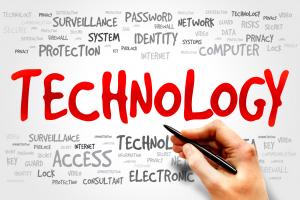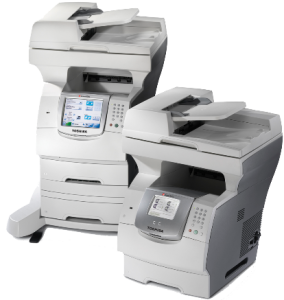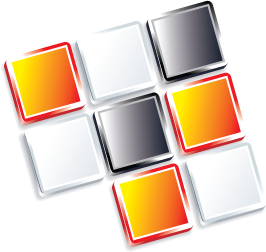Business Solutions
- Active Directory Implementation and support

- Exchange Implementation and support
- Firewall Implementation and support
- Virtual Private Network implementation and support
- Network and Infrastructure upgrades
- Company-wide software deployment and upgrades
- New office systems coordination
- Hardware installation and support
- Server setups and support
- Assistance with specialized applications (e.g. backup software, IIS, SharePoint, etc.)
P.O.S. Installations & Point of Sale Roll-outs
We are comprised of in-house trained technicians. We are your emergency replacement service. warranty call, break-fix, Installation of data cabling, Removal of old POS equipment and cabling networks,?terminal repair & reconditioning, Asset management, Fast IT Routers, Switches, Servers management, and Reliable onsite and “go live” support!
Your Mynians Computer & Networking Solutions support specialist will answer all your questions and will give you a basic tutorial in using your new computer for the first time and show you all the main features of your new computer. Just ask our clients Onforce, TekServePOS, HP, Dell, Nexicore, FS24/7, and many more. No job TOO big for Mynians.
Installation and Service
Installing and connecting your new system can be complicated and can take time. The Mynians Computer & Networking Solutions Setup and Connection service ensure that you spend less time reading the manuals and more time using your new system. We can even offer you this service if you are moving your computer from one location to another.
Your own private Mynians Computer & Networking Solutions Support Specialist will go through all the steps of setting up your new system including connecting all the cables, configuring your computer for its first use, setting up your email and internet, connecting your digital camera, printer, scanner and getting all the drivers installed, installing important security software such as anti-virus and a firewall, etc and making sure everything is working before they leave.
Save time and money. Chances are you are perfectly capable of learning how to set up an active directory network or deploy an Exchange server for your company on your own. However, chances also are that your time is worth much more than the affordable rates we offer to assist you with your business’ technology needs. We can help you save time and money by lending your business our technical expertise. Client lists ranging from Office Depot, RBC Bank, and Pinnacle Management to the average home user.
The System Tune-Up Package
Sometimes removing malware just isn’t enough, and that’s where Mynians Computer & Networking Solutions Everything Package comes in. This includes our World-
This package makes the most sense. There are times when malware only plays a small part in your computer’s speed, and with the Everything Package, you’re covered.
Q: How does this service work?
A: Once you connect to the service, you are prompted to download a small, self-
Q: Can my support representative look through files without my knowledge?
A: Absolutely not. Your representative sees only what you see and whatever you permit him or her to see on your computer screen. Before your support representative views your screen, he or she will first ask your permission and request that you close all documents containing private information.
A: At the beginning of a screen- unless you make another explicit request for support.
unless you make another explicit request for support.
Q: Are there any files or folders left on my computer after the session ends?
A: The downloaded file stays on your computer; however, the file is useless without a new “encryption key.” To download a new encryption key, you would need to initiate a subsequent session with a support representative. Screen-
Mynians is your virtual help desk. We offer a free computer diagnosis. With our remote assistance tools, we can determine your IT needs. Let us take a look! Listed below are our remote assistance capabilities. Click on the link and give us a call we will handle it from there!
Personal Solutions
Convenient in-
Residential Services
- Remote Support
- Wireless network setup and security
- Spyware & Virus removal
- Hardware and software installation
- Computer repair
- Computer Delivery and Installation
- Data recovery
- Computer Forensics
- Computer training
- … and much more
Virus Removal
This is where the Certified Professionals at Mynians Computer & Networking Solutions come in and attack this malware with everything they’ve got. The arsenal of tools at their disposal are so effective, that if we can’t remove your malware, YOU DON’T PAY ANYTHING.
After the removal is complete, we’ll also recommend, at no additional charge, which anti-
A: Once you connect to the service, you are prompted to download a small, self-
Q: Can my support representative look through files without my knowledge?
A: Absolutely not. Your representative sees only what you see and whatever you permit him or her to see on your computer screen. Before your support representative views your screen, he or she will first ask your permission and request that you close all documents containing private information.
Q: How is security maintained?
A: At the beginning of a screen-
Q: Are there any files or folders left on my computer after the session ends?
A: The downloaded file stays on your computer; however, the file is useless without a new “encryption key.” To download a new encryption key, you would need to initiate a subsequent session with a support representative. Screen-
Mynians is your virtual help desk. We offer a free computer diagnosis. With our remote assistance tools, we can determine your IT needs. Let us take a look! Listed below are our remote assistance capabilities. Click on the link and give us a call we will handle it from there!
Remote Assistance
 Mynians is your virtual help desk. We offer a FREE Virus and Spyware Scan. Got a problem with your computer? Why wait several days (or weeks!) to have your computer fixed when you can have a Remote Repair fix your computer in a matter of hours. We can fix over 80% of computer problems remotely and most fixes take no more than 30 minutes. We offer our low price remote services worldwide, all you need is a broadband internet connection. Even if your internet connection is not working we can fix this over the phone before performing the remote fix (if it is still needed by then!).
Mynians is your virtual help desk. We offer a FREE Virus and Spyware Scan. Got a problem with your computer? Why wait several days (or weeks!) to have your computer fixed when you can have a Remote Repair fix your computer in a matter of hours. We can fix over 80% of computer problems remotely and most fixes take no more than 30 minutes. We offer our low price remote services worldwide, all you need is a broadband internet connection. Even if your internet connection is not working we can fix this over the phone before performing the remote fix (if it is still needed by then!).
From only $19.95, Mynians Computer & Networking Solutions Remote Assistance is a cost-effective and easy way to solve your computer problems effectively and quickly get your computer back up and running in no time. With our remote assistance tools, we can determine your IT needs. Let us take a look! Listed below are our remote assistance capabilities. Click on the link and give us a call we will handle it from there!
Print Repair Services
Q: How does this service work?
A: Once you connect to the service, you are prompted to download a small, self-
Q: Can my support representative look through files without my knowledge?
A: Absolutely not. Your representative sees only what you see and whatever you permit him or her to see on your computer screen. Before your support representative views your screen, he or she will first ask your permission and request that you close all documents containing private information.
Q: How is security maintained?
A: At the beginning of a screen- session, you and your support representative are connected via a communication server. The screen data that is passed between you and your support representative during a session is highly compressed using proprietary technology that can be viewed only with Remote Assistance software. This data is also encrypted using 128-
session, you and your support representative are connected via a communication server. The screen data that is passed between you and your support representative during a session is highly compressed using proprietary technology that can be viewed only with Remote Assistance software. This data is also encrypted using 128-
Q: Are there any files or folders left on my computer after the session ends?
A: The downloaded file stays on your computer; however, the file is useless without a new “encryption key.” To download a new encryption key, you would need to initiate a subsequent session with a support representative. Screen-sharing sessions have to be initiated by you, not a support representative.
Mynians is your virtual help desk. We offer a free computer diagnosis. With our remote assistance tools, we can determine your IT needs. Let us take a look! Listed below are our remote assistance capabilities. Click on the link and give us a call we will handle it from there!
Networking
A computer network or data network is a telecommunications network that allows computers to exchange data. In computer networks, networked computing devices pass data to each other along with data connections. The connections (network links) between nodes are established using either cable media or wireless media. The best-known computer network is the Internet. Network computer devices that originate, route, and terminate the data are called network nodes. Nodes can include hosts such as servers and personal computers, as well as networking hardware. Two devices are said to be networked when a device is able to exchange information with another device. Computer networks support applications such as access to the World Wide Web, shared use of application and storage servers, printers, and fax machines, and use of email and instant messaging applications. Computer networks differ in the physical media used to transmit their signals, the communications protocols to organize network traffic, the network’s size, topology, and organizational intent.
A computer or device on a network that manages network resources. For example, a file server is a computer and storage device dedicated to storing files. Any user on the network can store files on the server. A print server is a computer that manages one or more printers, and a network server is a computer that manages network traffic. A database server is a computer system that processes database queries.
Servers
Servers are often dedicated, meaning that they perform no other tasks besides their server tasks. On multiprocessing operating systems, however, a single computer can execute several programs at once. A server in this case could refer to the program that is managing resources rather than the entire computer.
 If you’re not familiar with the functions of a server but have heard the term in passing, you may think of a server as some mystical computer beast that performs amazing tasks and generally is a hands-off system. Before we delve into the inner-workings of a server, let’s start by dispelling that “mystical” thing. From a hardware perspective, a server is simply a computer on your network that is configured to share its resources or run applications for the other computers on the network. You may have a server in place to handle file or database sharing between all users on your network or have a server configured to allow all users to share a printer, rather than having a printer hooked up to each individual computer in your organization.
If you’re not familiar with the functions of a server but have heard the term in passing, you may think of a server as some mystical computer beast that performs amazing tasks and generally is a hands-off system. Before we delve into the inner-workings of a server, let’s start by dispelling that “mystical” thing. From a hardware perspective, a server is simply a computer on your network that is configured to share its resources or run applications for the other computers on the network. You may have a server in place to handle file or database sharing between all users on your network or have a server configured to allow all users to share a printer, rather than having a printer hooked up to each individual computer in your organization.
What makes the term server doubly confusing is that it can refer to both hardware and software. That is, it can be used to describe a specific software package running on a computer or the computer on which that software is running.
Domain: A group of computers and devices on a network that is administered as a unit with common rules and procedures. Within the Internet, domains are defined by the IP address. All devices sharing a common part of the IP address are said to be in the same domain. (2) In database technology, domain refers to the description of an attribute’s allowed values. The physical description is a set of values the attribute can have, and the semantic, or logical, the description is the meaning of the attribute.
Router: A device that forwards data packets along with networks. A router is connected to at least two networks, commonly two LANs or WANs or a LAN and its ISP’s network. Routers are located at gateways, the places where two or more networks connect.
Routers use headers and forwarding tables to determine the best path for forwarding the packets, and they use protocols such as ICMP to communicate with each other and configure the best route between any two hosts.
Very little filtering of data is done through routers.
A group of two or more computer systems linked together.
There are many types of computer networks, including:
- Local-Area Networks (LANs): The computers are geographically close together (that is, in the same building).
- Wide-Area Networks (WANs): The computers are farther apart and are connected by telephone lines or radio waves.
- Campus-Area Networks (CANs): The computers are within a limited geographic area, such as a campus or military base.
- Metropolitan-Area Networks (MANs): A data network designed for a town or city.
- Home-Area Networks (Hans): A network contained within a user’s home that connects a person’s digital devices.
In addition to these types, the following characteristics are also used to categorize different types of networks:
- Topology: The geometric arrangement of a computer system. Common topologies include a bus, star, and ring.
- Protocol: The protocol defines a common set of rules and signals that computers on the network use to communicate. One of the most popular protocols for LANs is called Ethernet.
- Another popular LAN protocol for PCs is the IBM token-ring network.
- Architecture: Networks can be broadly classified as using either a peer-to-peer or client/server architecture.
Computers on a network are sometimes called nodes. Computers and devices that allocate resources for a network are called servers. (v.) To connect two or more computers together with the ability to communicate with each other.

